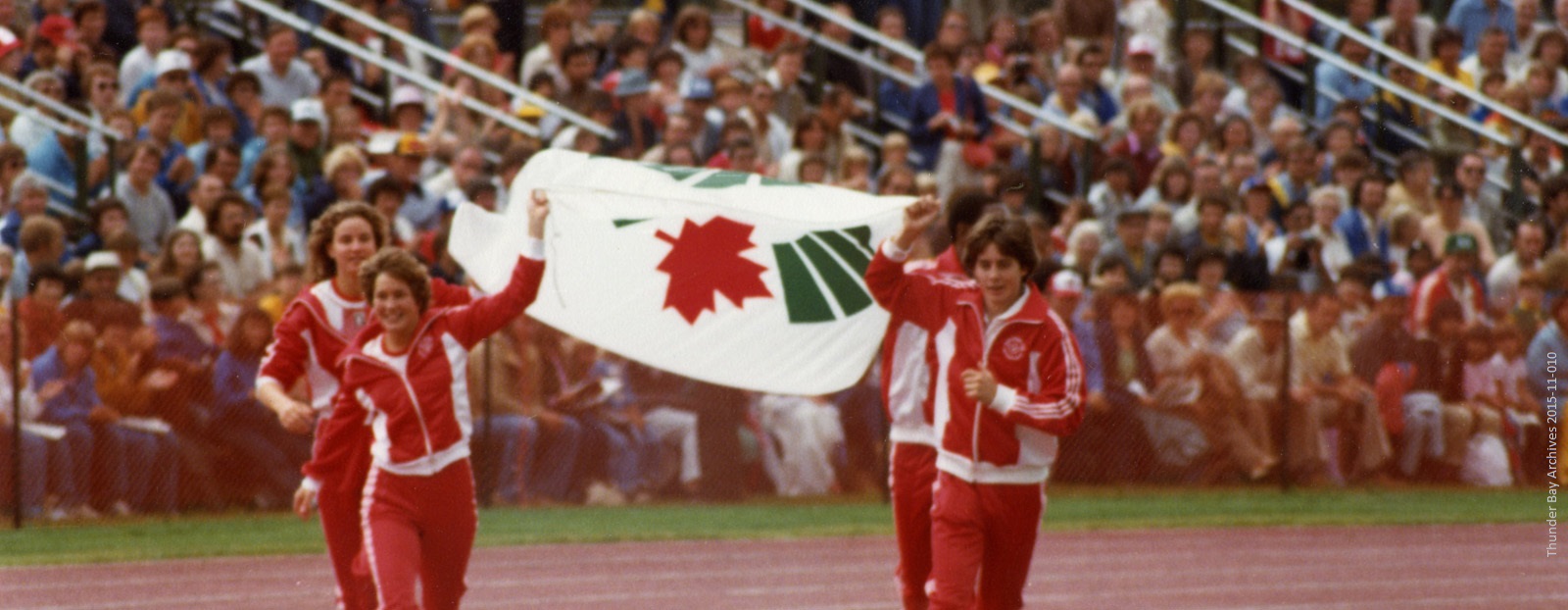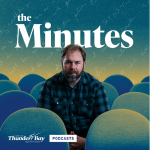Investing in Young Canada
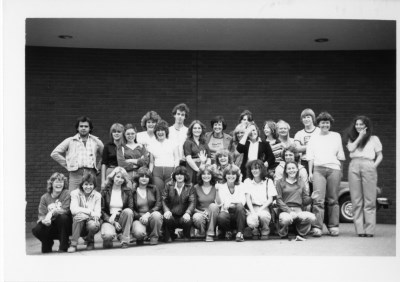 From the very beginning of the Jeux Canada Games in 1967, the Games had been heralded as an opportunity to invest in the youth of Canada, offering opportunities and possibilities that extended beyond the development of facilities. The Games provided opportunities for community participation, promoted awareness of the importance of health and well-being, enabled local members of the community to develop marketable skills and allowed young Canadians to reach their full potential while gaining recognition for their efforts. In 1981, these extended benefits were demonstrated through the recruitment of staff and volunteers from the region, the development of complementary programs alongside the Games and the training opportunities catered to officials. By the time the Games began, the total volunteer contribution was estimated to involve approximately 5,000 people, while 67 people had been recruited as paid staff. Additionally, Thunder Bay provided a host of sport officials, many of whom were trained through specially developed training seminars held in Thunder Bay in the years leading up to the event. The effects of the Games on Thunder Bay were best explained by General Manager Taras Kozyra who stated in a Post Games Report:
From the very beginning of the Jeux Canada Games in 1967, the Games had been heralded as an opportunity to invest in the youth of Canada, offering opportunities and possibilities that extended beyond the development of facilities. The Games provided opportunities for community participation, promoted awareness of the importance of health and well-being, enabled local members of the community to develop marketable skills and allowed young Canadians to reach their full potential while gaining recognition for their efforts. In 1981, these extended benefits were demonstrated through the recruitment of staff and volunteers from the region, the development of complementary programs alongside the Games and the training opportunities catered to officials. By the time the Games began, the total volunteer contribution was estimated to involve approximately 5,000 people, while 67 people had been recruited as paid staff. Additionally, Thunder Bay provided a host of sport officials, many of whom were trained through specially developed training seminars held in Thunder Bay in the years leading up to the event. The effects of the Games on Thunder Bay were best explained by General Manager Taras Kozyra who stated in a Post Games Report:
“The 1981 Jeux Canada Games have come and gone but the warm glow of pride remains with the people of Thunder Bay – a City that will never be the same again.”1
Other local initiatives raising support and funding for the Games included:
- Approximately 70 volunteers at the Franklin Street Public School sewed costumes for the opening and closing ceremonies.
- South Neebing Women’s Institute created a quilt and held a raffle to raise funds. Students of the Queen Elizabeth School participated in a Walkathon.
- The Royal Canadian Legion hosted the “$81,000 Big Game” lottery.
- Senior citizens created a quilt depicting Choklit Moose that they donated to the Thunder Bay Arts Centre.
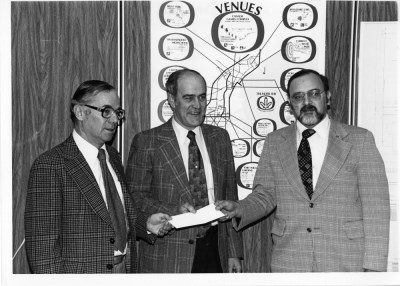 The host society of the Jeux Canada Games 1981 recognized the potential that complementary programs could play in fostering community involvement. Programs in effect throughout the course of the Games included the cultural program (Creative Canada Créatif), the Educational Student Exchange program and the Community Fitness First program. The cultural program encouraged artists to the City, and opened opportunities for local artists in the area to achieve recognition on a national scale, with art exhibits, workshops and an expansion of currently offered cultural programs within the City. Funding from the Ontario Ministry of Culture and Recreation allowed for an acquisition budget to complement the newly constructed Canada Games Complex, decorating the lobby with artistic celebrations and giving local artists an opportunity to exhibit their work in a highly visible public space. Other supporters of Creative Canada Créatif included the Federal Department of Communications, the Wintario Program offered by the Government of Ontario and the Ontario Arts Council.
The host society of the Jeux Canada Games 1981 recognized the potential that complementary programs could play in fostering community involvement. Programs in effect throughout the course of the Games included the cultural program (Creative Canada Créatif), the Educational Student Exchange program and the Community Fitness First program. The cultural program encouraged artists to the City, and opened opportunities for local artists in the area to achieve recognition on a national scale, with art exhibits, workshops and an expansion of currently offered cultural programs within the City. Funding from the Ontario Ministry of Culture and Recreation allowed for an acquisition budget to complement the newly constructed Canada Games Complex, decorating the lobby with artistic celebrations and giving local artists an opportunity to exhibit their work in a highly visible public space. Other supporters of Creative Canada Créatif included the Federal Department of Communications, the Wintario Program offered by the Government of Ontario and the Ontario Arts Council.
A further benefit of this program was that it united over 100 different cultural organizations already in Thunder Bay at the time, allowing for a highly successful cooperative effort where skills and resources could be combined to expand upon the cultural opportunities available within Thunder Bay for the years to come. Cultural activities and events took place well before the actual Games, but a heightened degree of activity was centered around the event. Included in the August 1981 program was an exhibition titled ‘Body Works’, designed by the Ontario Science Centre, a solo exhibit of works created by Northwestern Ontario artist Norval Morriseau, an Arts and Crafts fair, a series of exhibits developed by the Royal Ontario Museum and dance workshops hosted by the Grossman Dance Company. Selected materials from the National Sport Art Collection were also exhibited in the Canada Games Complex throughout the course of the Games.
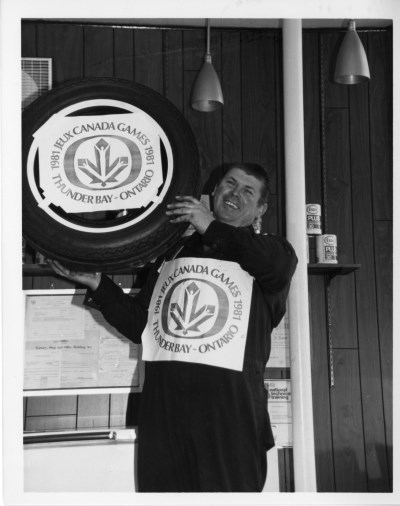 Aside from the cultural component of the Games, a side project entitled the Community Fitness First Campaign was developed by the Thunder Bay District Health Council. The Campaign, which involved senior members of the host society, including Taras Kozyra and Dave Siciliano, used the Jeux Canada Games 1981 as a catalyst to encourage physical activity and promote a healthy lifestyle.
Aside from the cultural component of the Games, a side project entitled the Community Fitness First Campaign was developed by the Thunder Bay District Health Council. The Campaign, which involved senior members of the host society, including Taras Kozyra and Dave Siciliano, used the Jeux Canada Games 1981 as a catalyst to encourage physical activity and promote a healthy lifestyle.
Host society members and members of City Council also saw the initiative as an opportunity to ensure that the recreational facilities would continue to be used beyond the course of the Games, ensuring that the facilities would serve as a worthwhile investment for the City. The overall objective of the campaign, according to the creators, was to:
“encourage citizens of Thunder Bay to become more active, more frequently, and more regularly” and to “change the macro-level social, cultural and economic barriers that influence people’s personal health decisions.”2
Health and fitness education also extended to the classroom. Educational curriculum materials were also adapted to include a focus on sport and fitness. Host Groups were encouraged to visit, mini-games events were staged to involve students and student exchanges took place.
1 Post Games Report prepared by Taras Kozyra. City of Thunder Bay Archives (TBA 8038-04).
2 Excerpt taken from a speech titled Strategic Planning for Health Promotion at the Community Level delivered by Frances Guzzi and D. Wesley Leister to the Canadian Public Health Association Annual Conference, held in Ottawa (June 1980). City of Thunder Bay Archives (TBA 8038-41).
Contact Us


